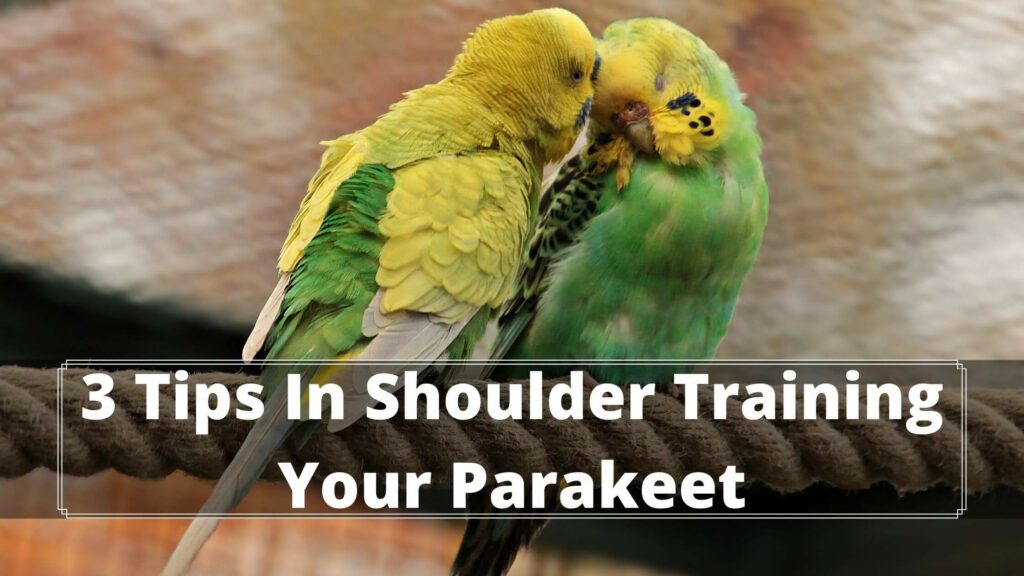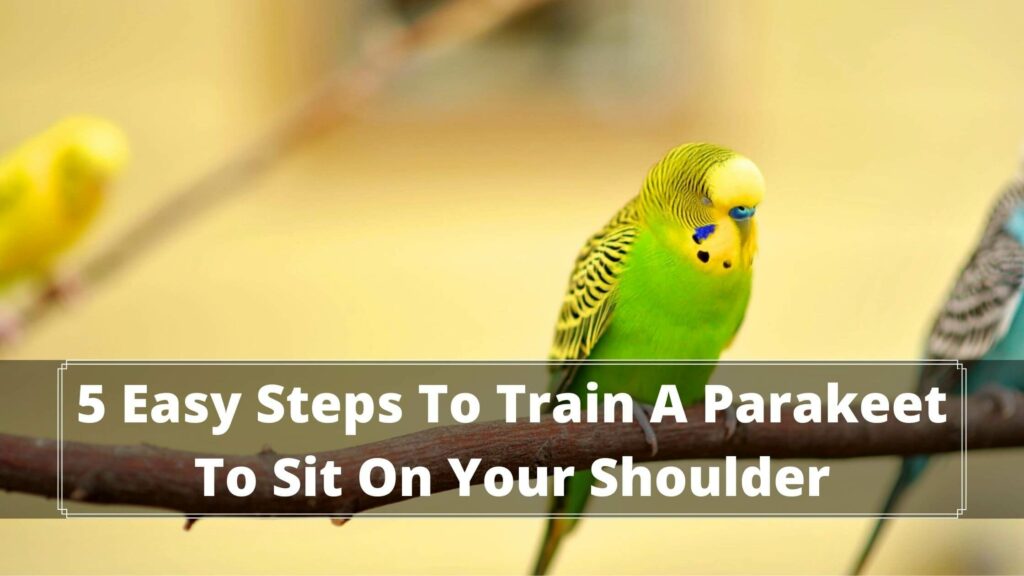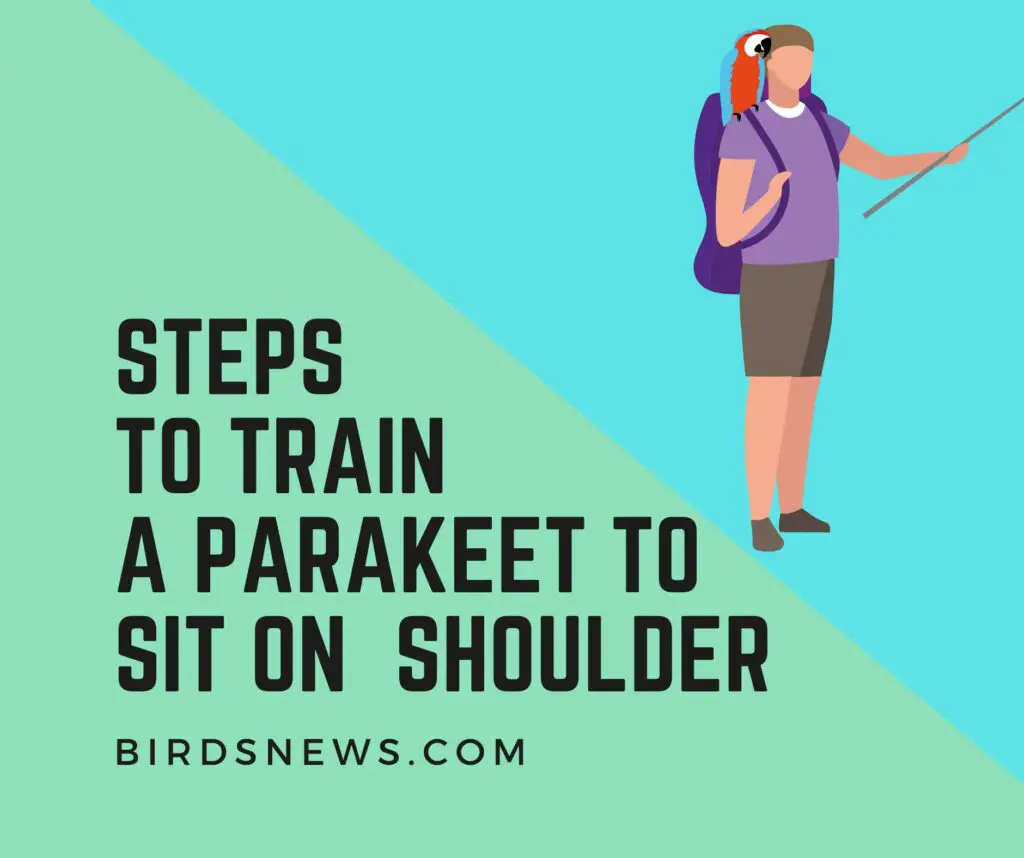Many bird owners have successfully trained their parakeets to do a variety of tricks. If you are also looking to know the steps to prepare a parakeet to sit on your shoulder, you are right. Other than this, you can also train Your parakeet to come to you when you call them.
Teaching them to stand on your finger is also pretty easy. Parakeets are known to talk, and they can also mimic a few words like a human. So, one of the standard tricks is training a parakeet to sit on the shoulder isn’t so hard.
Getting a parakeet on your shoulder will strengthen your bond with your bird. This is the reason, being a responsible owner, you have to learn how to train a parakeet to sit on the shoulder.
How to Shoulder Train Your Bird/Parrot?
There are five steps to getting a parakeet shoulder trained. Go through this article Thoroughly and follow the procedure of training a parakeet to be fearless of your hand to the point that it naturally sits on your shoulder. If your parakeet is not coming near you, you can read our guide on how to get a parakeet to come to you.
As your parakeet is at ease with being on your finger, you can shift your bird carefully to your shoulder as well. Before making any move, you should allow your bird to sit on your shoulder first for a few minutes. You might have to perform numerous sessions by just letting a parakeet stay on your shoulder to the point where it feels comfortable.
While your parakeet is on your shoulder, you can carefully start to walk around the room. It will need some time before your parakeet is at ease with riding on your shoulder, but it will be worth it. However, just like any other training of parakeets, the best trainer is, of course, you, the owner.
This might help if you managed your parakeet to involve a great trust and bond between you and the parakeets. It will be challenging for the parakeet to learn from someone. It doesn’t recognize and has no conviction.
Plus, if another person is training a parakeet, it may even lead the bird to become more emotionally involved with that person. Let’s talk about a few tips on preparing a parakeet to sit on your shoulder.
3 Tips In Shoulder Training Your Parakeet

- Try getting suggestions from fellow parakeet owners or professional Bird handlers.
- When a parakeet sits on your shoulder, you are likely to get hurt with sharp nails. Get their nails trimmed with a good quality nail clipper to stay safe.
- Avoid moving quickly from one place to another when your parakeet is on your shoulder, especially when adjusting itself to the new perch.
5 Easy Steps To Train A Parakeet To Sit On Your Shoulder

1. Show Your Parakeet the Way
Firstly, parakeets should be trained to come near to you. If it has not been prepared in such a way, consider our article on how to train a parakeet to go near you. Once you call your parakeet to your hand, you can gently place it on the shoulder.
For the upcoming week or at least a week, your genuine concern should be making sure you are safe against any sudden moves from the parakeet. Remember to keep your eyes looking forward to safeguarding them from any curious pecking of your parakeet.
The only purpose of this step is to show the parakeet that your shoulder is suitable for standing, just like any other perch installed in their cage. Avoid forcing a parakeet to stay on your shoulder; otherwise, it will break the trust you have built for so long and thus make the parakeet aggressive.
2. Behavior Reinforcement
Behavior reinforcement is the magical method we often use to train a bird. Place your parakeet on the shoulder and instantly click and treat. You can repeat the clicking and minister to your parakeet every 10 seconds. This will help your parakeet associate the time it spends on your shoulder with the positive feeling of treats.
If your parakeet seems bored and chooses to fly away, stop clicking and treating. It is essential to prefer the clicking condition to the shoulder training session initially. Since the parakeets are very intelligent, they will understand it faster and better.
3. Keep Your Parakeet Happy
Always try to keep your parakeet happy; bike through caressing them in their favorite spots as it stands on your shoulder. Here you can learn how to tell if a parakeet is happy.
4. Cues
You can always get creative as much as you want with the cues you choose to use to signal the parakeet to sit on your shoulder. Tapping or whistling is one of those moves that tend to be an excellent way to impress your friends also.
Interesting Further Reading
- Why Is My Parakeet Puffed Up?
- 7 Games To Play With Your Parakeet
- 5 Reasons Why Do Parakeets Pluck Their Feathers?
5. Use Parakeet Pants
Many might not know, but parakeets can also wear pants. These pants are cute harnesses where you can easily fit pantyliners to collect your parakeet dropping. Plus, these parakeets’ pants don’t impede their movement and wings.
Instead, these pants will allow your parakeet to stand on your shoulder and roam around other corners of the house as much as it wants. However, you will need to change the particular pantyliner every 2-3 hours.
As soon as your parakeet associates the snap with the solder sitting, you can also try calling it from a distance. If a parakeet responded, choose to click and reward, and if it didn’t, you need to proceed with the training.
Consider using cues like calling a parakeet by a name or whistling distinctly pointing to your shoulder. Always try to be creative to impress others with what your parakeet can do. Training a parakeet is to stay patient, as good training always takes time to approach and deliver results.
Where To Find Help?
You can find various online resources, including books published by skilled parakeet caretakers. You can also acquire this training through a neighboring bookstore at a local pet shop. I recommend you check our other articles and great resources on parakeet care.
You can also use YouTube to get help with YouTube videos by obtaining them from an online store. Several websites, including Us, host many resources for free to read and collect information from. Always ensure that a professional bird handler has published the videos, articles, or books.

Hi, There and Welcome to BirdsNews.com, is here to help you learn and care about pet birds. and this blog is a journal of everything I’ve learned.

